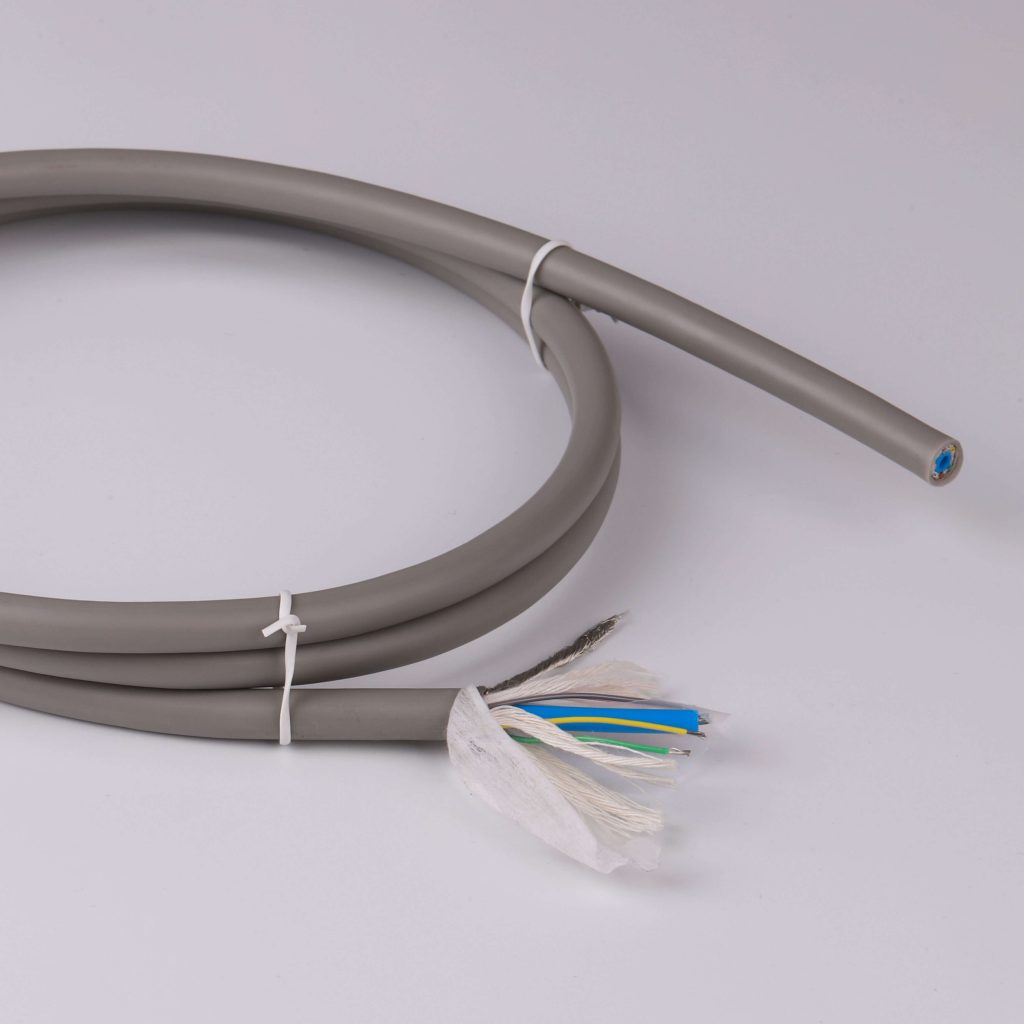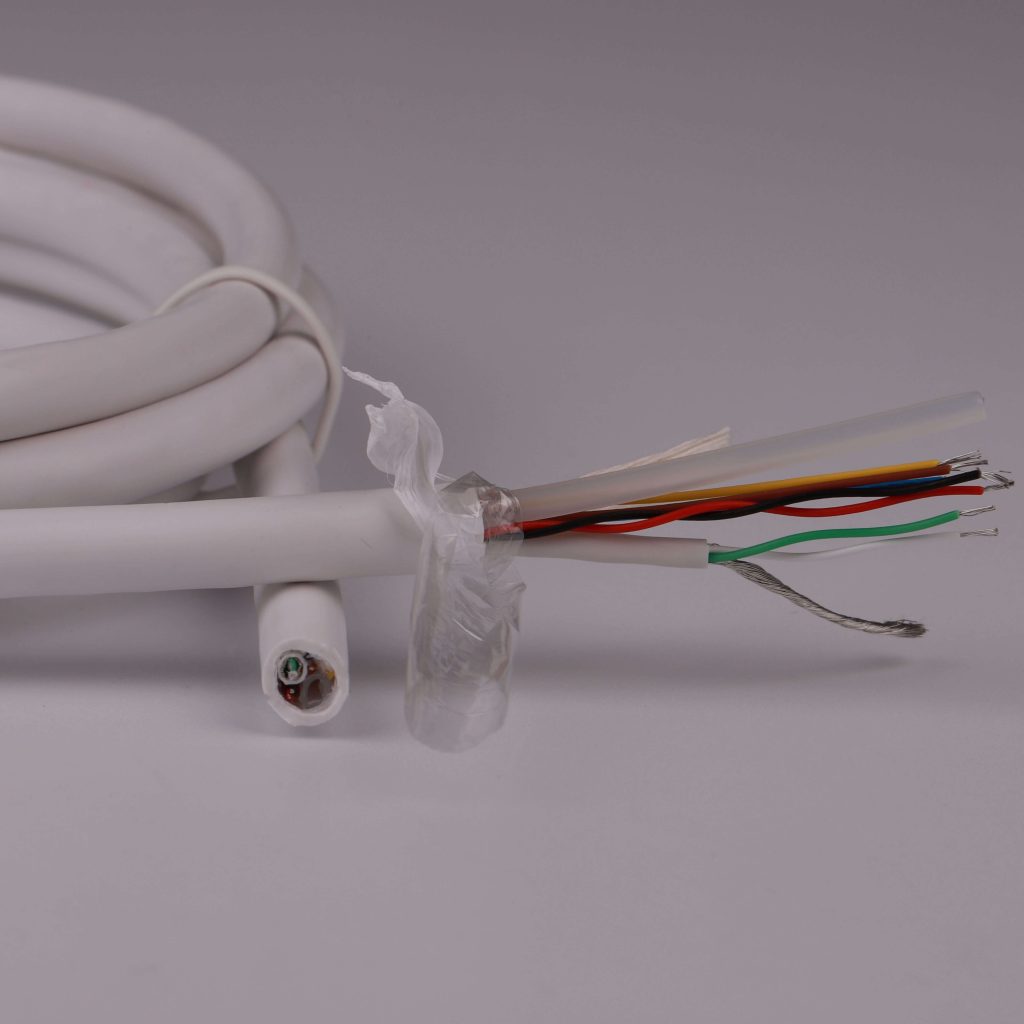Custom Medical Cable With Tube For ESWT Machine-shock wave therapy equipment
A Cable used in ESWT machine is a specialized cable designed to deliver shock waves for various medical applications. Its design, materials, and applications are crucial factors that determine its performance and reliability. By using high-quality materials, such as polyurethane, and ensuring proper design and manufacturing, ESWT cable can deliver consistent and reliable performance in the most demanding environments. If you are looking for a custom ESWT cable, be sure to work with a trusted and experienced cable manufacturer that can provide you with the right materials and design to meet your specific needs for Shock Wave Therapy Equipment.
Cable used in ESWT Machines usually include 6 or 7 wire with shielded,and there will be at least one Tube inside,or two tube even three,it depands on the devices


Medical Shock Wave – ESWT (Extracorporeal Shock Wave Therapy) Cable is an essential component used in the medical field to deliver shock waves for treating various ailments. It is a highly specialized cable designed to withstand extreme conditions, including high temperatures, pressure, and physical stress. In this article, we will take a closer look at the design, materials, and applications of custom ESWT cable.
Design of ESWT Machine Cable:
The design of ESWT cable is critical to its performance and reliability. The cable must be flexible, lightweight, and able to withstand high pressure and repeated bending. The core of the cable is usually made of multiple strands of high-strength copper wire, which provides excellent conductivity and flexibility. The cable also includes a protective layer, which is typically made of polyurethane or polyvinyl chloride (PVC), to ensure its durability and resistance to abrasion, chemicals, and heat.
Applications of ESWT Machine Cable:
ESWT Machine cable is used in various medical applications, including lithotripsy, orthopedics, and urology. In lithotripsy, ESWT cable is used to deliver shock waves to break up kidney stones, gallstones, and other calcified tissues. In orthopedics, ESWT cable is used to promote bone healing and treat tendonitis, while in urology, it is used to treat erectile dysfunction and Peyronie’s disease.
Materials Used in ESWT Cable:
The materials used in ESWT cable play a vital role in determining its performance and suitability for specific applications. Polyurethane and PVC are the most common materials used for the protective layer of ESWT cable. Polyurethane is preferred for its excellent mechanical properties, including high elasticity, flexibility, and abrasion resistance. It is also resistant to chemicals and UV light, making it ideal for outdoor applications. PVC, on the other hand, is an excellent choice for applications that require high-temperature resistance, fire retardancy, and good electrical insulation.
Inside an ESWT cable, there is a tube which serves an important function in the overall cable design. The tube is typically made from a flexible and durable material such as medical grade silicone, and it is designed to house wires and other components that need to be protected from the external environment.
The tube serves a few different purposes. Firstly, it provides mechanical protection to the wires and other components that it contains. This is particularly important in medical applications where the cable may be subject to bending, twisting, and other forms of stress. The tube helps to prevent the wires from being damaged or broken under these conditions.
Secondly, the tube can act as a barrier to protect the wires and components from moisture, dirt, and other contaminants. This is important for ensuring the long-term reliability and performance of the cable. The tube is often designed to be resistant to a range of chemicals and solvents, which helps to further protect the components inside.
Finally, in some cases, the tube may also serve as a conduit for fluids or gases. For example, in a medical device that uses a cooling fluid or gas to regulate temperature, the tube can be used to transport the fluid or gas to the appropriate location. This helps to ensure that the device operates at the correct temperature and that the patient is kept comfortable during treatment.